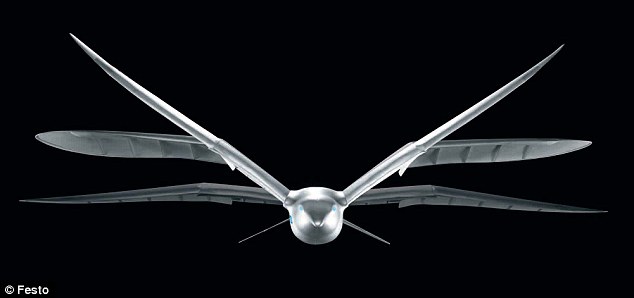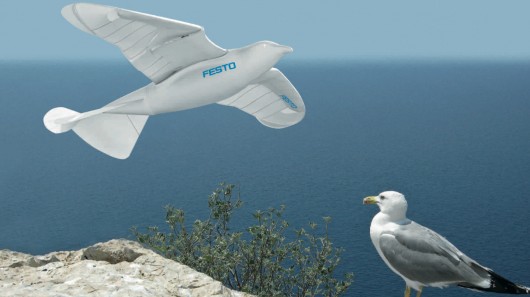Man, a curious and daring creature, has always dreamed of flight. Before the invention of the hot air balloon and the airplane, he looked towards nature for his inspiration, and what he saw was one of her most brilliant and graceful creations—the bird. Now, in a time when artificial flight is not only feasible but now becoming increasingly commonplace, it seems, without doubt, that man has accomplished this feat once and for all. Yet, even with all of mankind’s great advancements in the field of aerial locomotion, none have been so successful as to emulate the original, the genuine. That is to say, no airplane nor helicopter nor any other instrument we have conceived has been able to reproduce the flight of birds, one of natures pristine examples of efficient and adept flight.
Thus, though it may seem trivial, it is with great significance that in March of this year, 2011, a German Robotics company, Festo, unveiled its latest in a string of mechanical innovations – the SmartBird. The SmartBird is the first step to utilization of the science behind the flight of birds. The following is a video of ‘SmartBird’ in flight’:
The SmartBird is inspired by the Herring Gull, and although on the surface it looks rather simple, in reality, the SmartBird is a wonder in itself and an artifact to scientists and engineers studying aerodynamics. In designing the SmartBird, Festo employed wings which do not only beat up and down, but rotate and change angles in order to control flight. Just like a real bird, the SmartBird’s head and torso bend in order to maneuver aerodynamically and manipulate such forces as drag and angular momentum. On top of all this, the SmartBird’s tail acts as a pitch elevator and yaw rudder in order to control direction.

The SmartBird's wings move up and down but also rotate and change angles for aerodynamic flight.
One truly remarkable feat which researchers at Festo were able to accomplish through the SmartBird is that the device is able to take off and land on its own similar to a real bird. The ultralight aerodynamic materials put into designing the SmartBird allow this to happen. It is said that the SmartBird mimics nature so well that real gulls cannot tell the difference.

SmartBird compared to a common Gull
Ultimately the real weight of this accomplishment does not stem from the feat itself – at the end of the day, the SmartBird is but a very expensive and complex imitation seagull. However it is what the SmartBird symbolizes which gives it is place in history. The SmartBird is proof that after all these centuries mankind has finally gained the means of reproducing nature in artificial forms. The SmartBird is but a stepping stone in man’s drive to decipher the mysterious works of nature and then apply these understandings to his own creations.
Sources:
- http://www.gizmag.com/smartbird-robotic-seagull/18228/
- http://www.forbes.com/sites/alexknapp/2011/03/30/festo-builds-a-robot-bird/
- http://www.newscientist.com/blogs/nstv/2011/03/robot-bird-soars-through-the-sky.html
- http://www.dailymail.co.uk/sciencetech/article-1370845/SmartBird-mimics-flight-accurately-mistaken-real-thing.html
- http://www.guardian.co.uk/science/punctuated-equilibrium/2011/jul/26/1
One Comment
Lorena Barba posted on November 22, 2011 at 2:00 pm
Hi Sam – for reference, here are links to EK 131 student Charlie Schumacher’s post on the SmartBird
http://blogs.bu.edu/biolocomotion/2011/10/21/festos-smartbird/
and also Will Livingston’s post
http://blogs.bu.edu/biolocomotion/2011/10/13/the-unmanned-ornithopter/
This has been a popular topic! The videos are fascinating to watch.